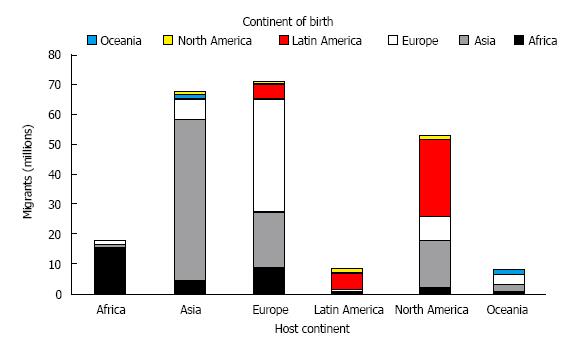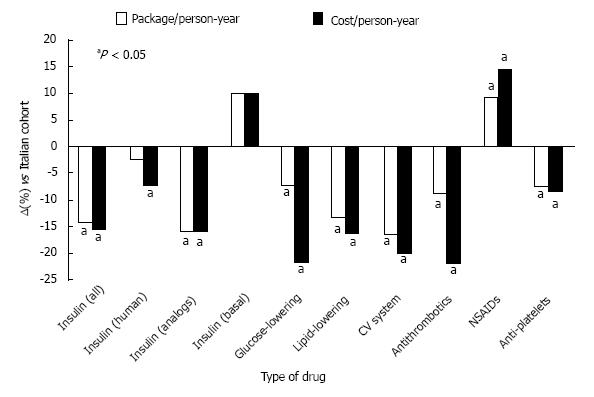Copyright
©The Author(s) 2016.
World J Diabetes. Feb 10, 2016; 7(3): 34-44
Published online Feb 10, 2016. doi: 10.4239/wjd.v7.i3.34
Published online Feb 10, 2016. doi: 10.4239/wjd.v7.i3.34
Figure 1 Worldwide numbers of migrants (over 200 million) in relation to continent of birth and host continent.
Note that most migration occurred intra-continentally. Massive inter-continental migration is recorded from Africa, Asia and Latin America to Europe, as well as from Asia and Latin America to North America, with virtually no migrants to Africa and Latin America and from Oceania.
Figure 2 Factors associated with non-communicable diseases in migrants.
A complex interaction between genetic, cultural and socio-economic factors is the basis for the development of NCDs, variably associated in different ethnic groups. NCD: Non-communicable diseases.
Figure 3 Differences in drug use and overall pharmacologic cost of diabetes in migrants, compared with native Italians.
Both drug use and total costs were lower in migrants, with a different use of insulin and oral hypoglycemic agents. Non-steroidal anti-inflammatory drug use was higher, possibly as a consequence of more common traumas and manual work.
- Citation: Montesi L, Caletti MT, Marchesini G. Diabetes in migrants and ethnic minorities in a changing World. World J Diabetes 2016; 7(3): 34-44
- URL: https://www.wjgnet.com/1948-9358/full/v7/i3/34.htm
- DOI: https://dx.doi.org/10.4239/wjd.v7.i3.34











